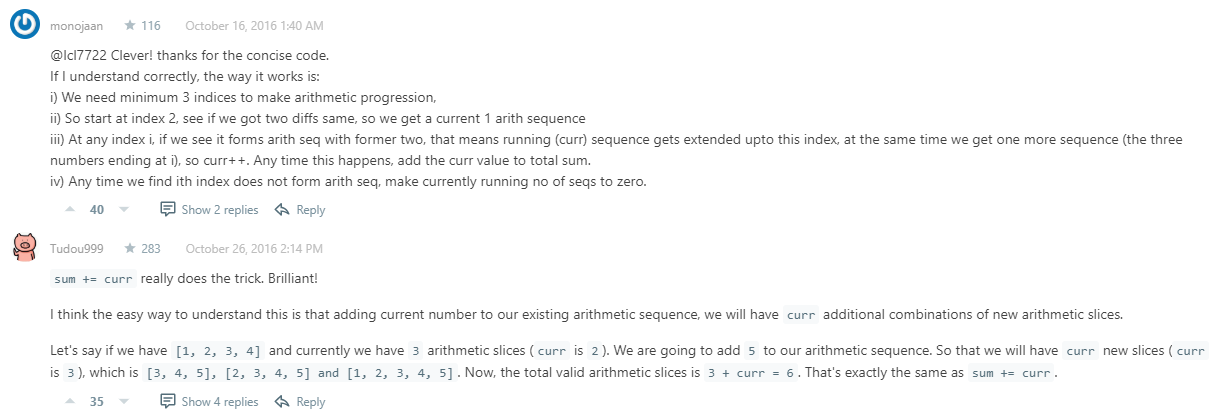413. Arithmetic Slices
A sequence of number is called arithmetic if it consists of at least three elements and if the difference between any two consecutive elements is the same.
For example, these are arithmetic sequence:
1, 3, 5, 7, 9 7, 7, 7, 7 3, -1, -5, -9
The following sequence is not arithmetic.
1, 1, 2, 5, 7
A zero-indexed array A consisting of N numbers is given. A slice of that array is any pair of integers (P, Q) such that 0 <= P < Q < N.
A slice (P, Q) of array A is called arithmetic if the sequence:
A[P], A[p + 1], ..., A[Q - 1], A[Q] is arithmetic. In particular, this means that P + 1 < Q.
The function should return the number of arithmetic slices in the array A.
Example:
A = [1, 2, 3, 4] return: 3, for 3 arithmetic slices in A: [1, 2, 3], [2, 3, 4] and [1, 2, 3, 4] itself.
class Solution { public int numberOfArithmeticSlices(int[] A) { int curr = 0, sum = 0; for (int i=2; i<A.length; i++) if (A[i]-A[i-1] == A[i-1]-A[i-2]) { curr += 1; sum += curr; } else { curr = 0; } return sum; } }






【推荐】编程新体验,更懂你的AI,立即体验豆包MarsCode编程助手
【推荐】凌霞软件回馈社区,博客园 & 1Panel & Halo 联合会员上线
【推荐】抖音旗下AI助手豆包,你的智能百科全书,全免费不限次数
【推荐】博客园社区专享云产品让利特惠,阿里云新客6.5折上折
【推荐】轻量又高性能的 SSH 工具 IShell:AI 加持,快人一步